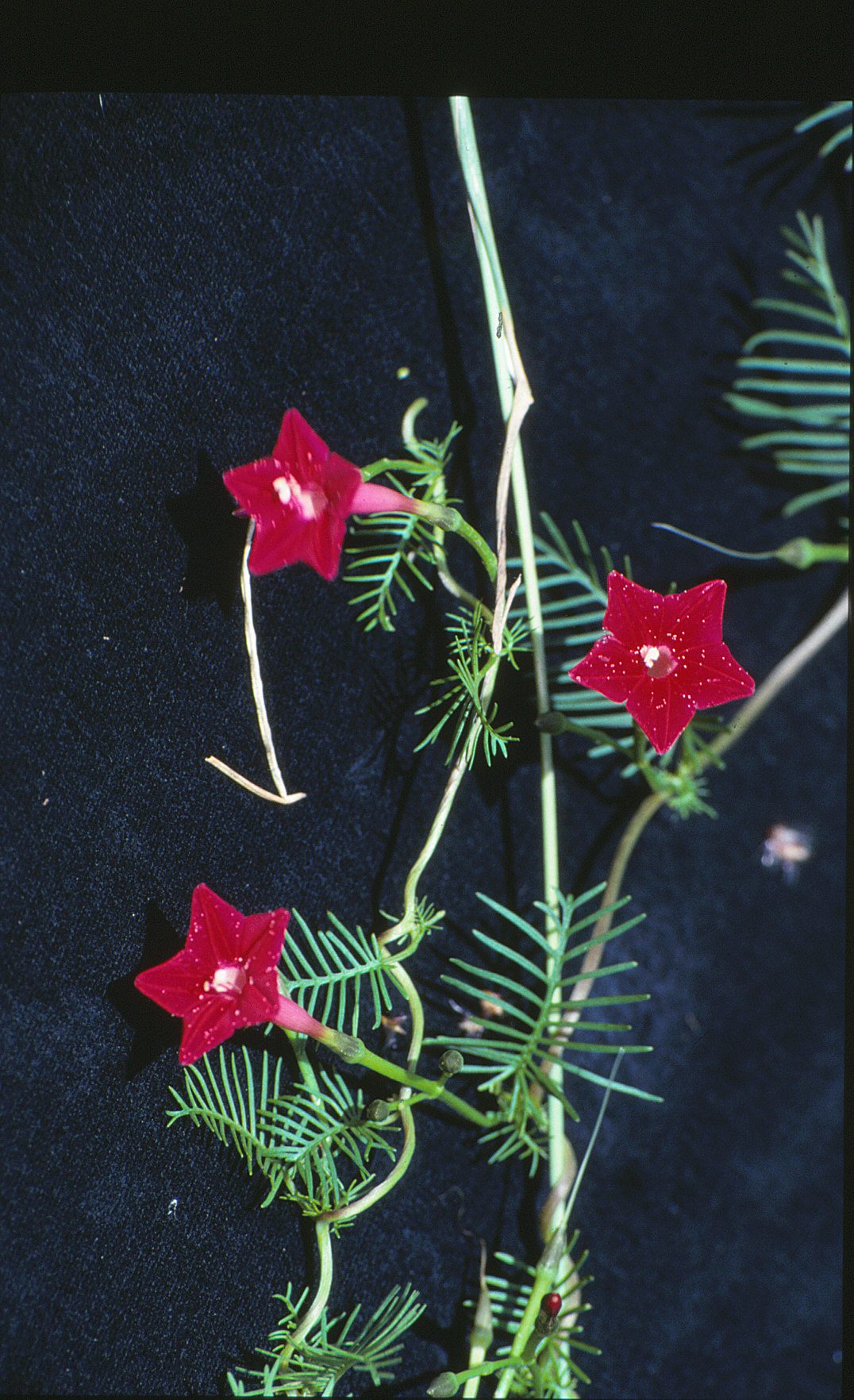Star of Bethlehem, Cupid’s flower
Ipomoea quamoclit, Fam. Convolvulaceae

Annual, slender deciduous twiner to 5m.
| Weed Category: |
Other invasive plants Invasive plants that are not prohibited or restricted invasive plants, but are known to spread readily and cause negative impacts, within the region.
|
| Weed: | Yes |
| Form or habit: | Vine (Climbing, Twining or groundcover) |
| Family: | Convolvulaceae |
| Leaf: | Simple Alternate Alternate simple. Fern-like, ovate or oblong in outline, 60 x 100mm, divided to the midrib into10-18 pairs of very narrow segments; stalks 5-40mm long. |
| Flower conspicuous: | Conspicuous |
| Flower colour: |
Red |
| Flower description: | Funnel-shaped with 5 shallow lobes. Red or scarlet with paler throat, 20-35mm diameter; borne in 1-few flowered groups on 15-120mm stem. |
| Fruit conspicuous: | Conspicuous |
| Fruit colour: |
Brown |
| Fruit: | Dry |
| Fruit description: | Brown globular capsules, 5-8 x 5-10mm with 4 dark brown to black warty seeds 5-6mm long. |
| Habitat: | |
| Distribution | |
| Food source for: | |
| Toxicity: | No toxicity known |
| Origin: | India |
| Notes: | Spread by: vegetative material and/or seeds in garden waste, water, contaminated soil on machinery, vehicles etc; contaminated pasture seeds and contaminated forest mulch. Invades/threats: agriculture, particularly the sugar-cane industry, grazing and the environment. Notes: a problem to the sugar industry. It grows over young cane and causes problems during harvesting. More than 20 species of Ipomoea occur in this district with 15 of them being native. Only one native species has been identified as being a problem to agriculture so, as always, correct identification is essential. Exotic species that are now widely naturalised were probably all introduced as ornamentals. The hard seeds have a long viability and most perennial species are also spread by vegetative means. The well-known sweet potato is Ipomoea tatatis. Environmental weed. |
| Information sources: | Mackay Regional Pest Management Group (2018) Weeds of the Mackay Whitsunday Region Second Edition. |



